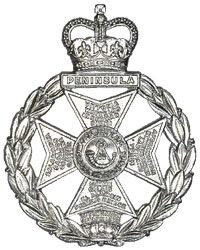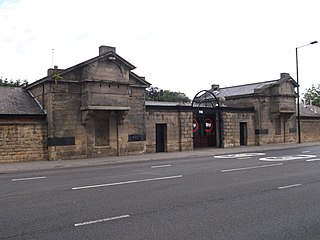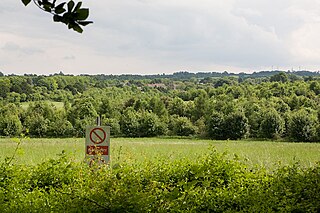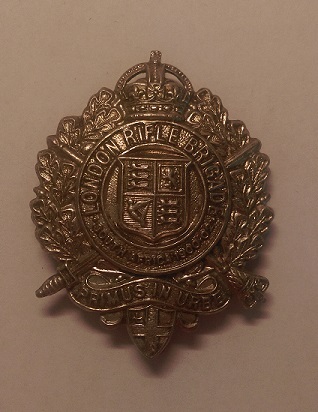
The King's Royal Rifle Corps was an infantry rifle regiment of the British Army that was originally raised in British North America as the Royal American Regiment during the phase of the Seven Years' War in North America known in the United States as 'The French and Indian War.' Subsequently numbered the 60th Regiment of Foot, the regiment served for more than 200 years throughout the British Empire. In 1958, the regiment joined the Oxfordshire and Buckinghamshire Light Infantry and the Rifle Brigade in the Green Jackets Brigade and in 1966 the three regiments were formally amalgamated to become the Royal Green Jackets. The KRRC became the 2nd Battalion, Royal Green Jackets. On the disbandment of the 1st Battalion, Royal Green Jackets in 1992, the RGJ's KRRC battalion was redesignated as the 1st Battalion, Royal Green Jackets, eventually becoming 2nd Battalion, The Rifles in 2007.
Options for Change was a restructuring of the British Armed Forces in summer 1990 after the end of the Cold War.

The Royal Green Jackets (RGJ) was an infantry regiment of the British Army, one of two "large regiments" within the Light Division.

The Royal Green Jackets (Rifles) Museum is situated at Peninsula Barracks in Winchester, England. The museum is one of several regimental museums that form part of Winchester's Military Museums.
The 1st Green Jackets was an infantry regiment of the British Army that existed from 1958 to 1966. The regiment served in the Cyprus Emergency, Brunei Revolt, Indonesia-Malaysia confrontation and West Berlin. The regiment formed part of the Green Jackets Brigade and in 1963 was redesignated as a rifle regiment.
The Rifles is an infantry regiment of the British Army. Formed in 2007, it consists of four Regular battalions and three Reserve battalions. Each Regular battalion of The Rifles was formerly an individual battalion of one of the two large regiments of the Light Division. Since formation the regiment has been involved in combat operations, first in the later stages of the Iraq War and in the War in Afghanistan.
The Light Division was a light infantry division of the British Army. Its origins lay in "Light Companies" formed during the late 18th century, to move at speed over inhospitable terrain and protect a main force with skirmishing tactics. These units took advantage of then-new technology in the form of rifles, which allowed it to emphasise marksmanship, and were aimed primarily at disrupting and harassing enemy forces, in skirmishes before the main forces clashed.

Lieutenant General Sir Christopher Brooke Quentin Wallace was a British Army officer and military historian.
The 1957 White Paper on Defence was a British white paper issued in March 1957 setting forth the perceived future of the British military. It had profound effects on all aspects of the defence industry but probably the most affected was the British aircraft industry. Duncan Sandys, the recently appointed Minister of Defence, produced the paper. The decisions were influenced by two major factors: the finances of the country and the coming of the missile age.
The 43rd Infantry Brigade was a brigade of the British Army during the First and Second World Wars, and later, as 43 (Wessex) Brigade, a regional headquarters from 1985 to 2014.
The Green Jackets Brigade was an administrative brigade of the British Army from 1946 to 1966 , that administered the English rifle regiments.
In countries whose armies are organised on a regimental basis, such as the army of the United Kingdom, a regimental museum is a military museum dedicated to the history of a specific army regiment.

The regimental depot of a regiment is its home base for recruiting and training. It is also where soldiers and officers awaiting discharge or postings are based and where injured soldiers return to full fitness after discharge from hospital before returning to full duty. Normally, a variety of regimental stores will also be kept at the depot. The regimental depot is not the same as the regimental headquarters, though in practice the two will often be co-located in the same place.
In September 1939, the British Army was in process of expanding their anti-aircraft and mobile assets. Among these new changes was the formation of Anti-Aircraft Command which was formed on 1 April 1939, and the 1st Armoured Division formed in 1937. The list below will include the British Army units, colonial units, and those units which were in the process of formation.

Fenham Barracks is a military installation in Barrack Road, Newcastle upon Tyne, Tyne and Wear, England.

Sir John Moore Barracks is a military installation near Winchester.
Colonel John Maurice Arthur Tillett was a British Army officer who had a critical role in the planning of the capture of the Caen canal and Orne river bridges on D-Day, 6 June 1944, during the Second World War. He was one of the last surviving British Army officers to have served with the 6th Airborne Division in Operation Mallard, on 6 June 1944, and in Operation Varsity, on 24 March 1945. He later commanded the Ugandan Army.
Winchester's Military Museums are a group of six independent and related regimental museums in Peninsula Barracks and Lower Barracks in Winchester, Hampshire.

The London Rifle Brigade was a volunteer regiment of the British Army.









